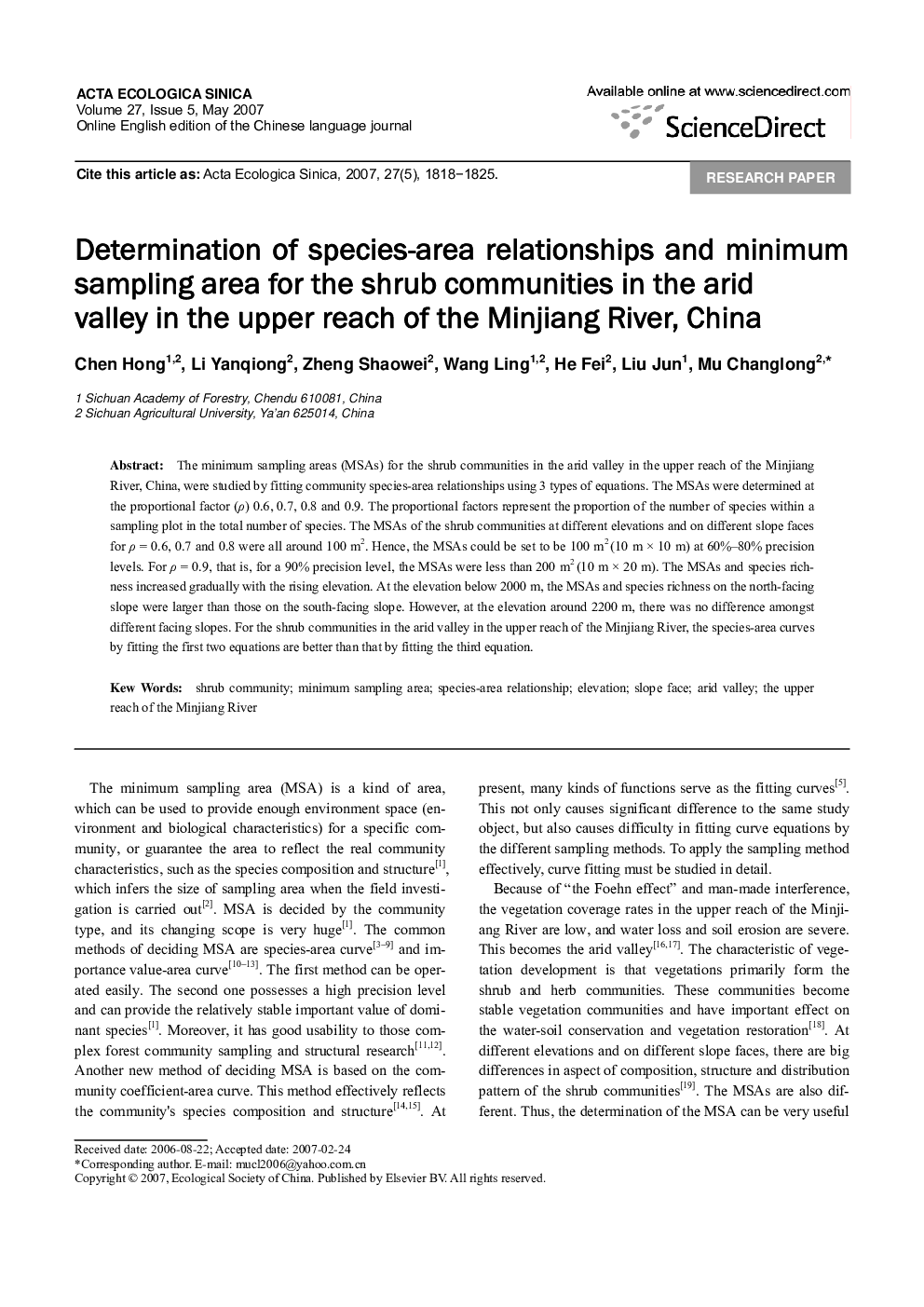| Article ID | Journal | Published Year | Pages | File Type |
|---|---|---|---|---|
| 4380527 | Acta Ecologica Sinica | 2007 | 8 Pages |
The minimum sampling areas (MSAs) for the shrub communities in the arid valley in the upper reach of the Minjiang River, China, were studied by fitting community species-area relationships using 3 types of equations. The MSAs were determined at the proportional factor (ρ) 0.6, 0.7, 0.8 and 0.9. The proportional factors represent the proportion of the number of species within a sampling plot in the total number of species. The MSAs of the shrub communities at different elevations and on different slope faces for ρ = 0.6, 0.7 and 0.8 were all around 100 m2. Hence, the MSAs could be set to be 100 m2 (10 m × 10 m) at 60%–80% precision levels. For ρ = 0.9, that is, for a 90% precision level, the MSAs were less than 200 m2 (10 m × 20 m). The MSAs and species richness increased gradually with the rising elevation. At the elevation below 2000 m, the MSAs and species richness on the north-facing slope were larger than those on the south-facing slope. However, at the elevation around 2200 m, there was no difference amongst different facing slopes. For the shrub communities in the arid valley in the upper reach of the Minjiang River, the species-area curves by fitting the first two equations are better than that by fitting the third equation.
